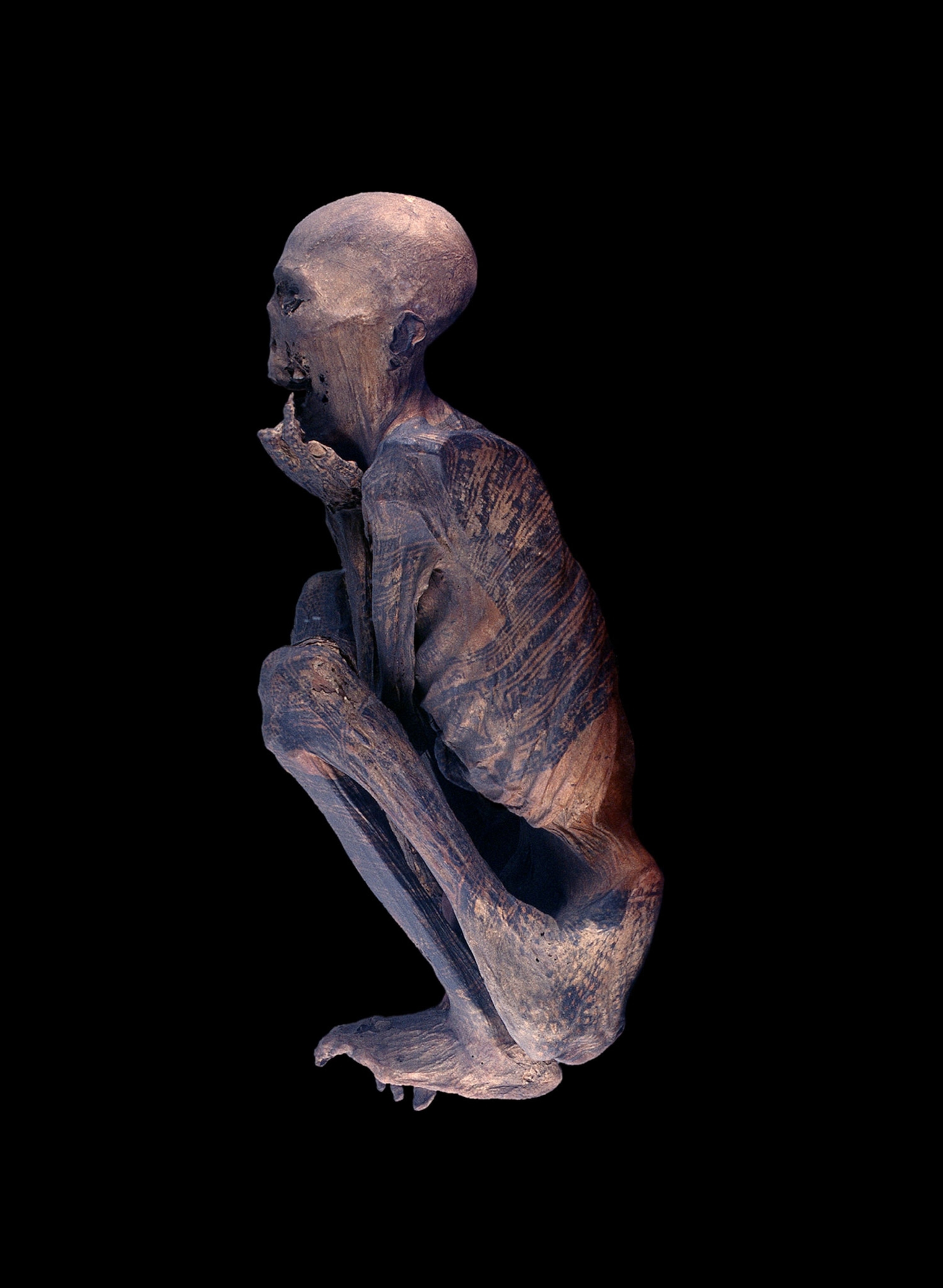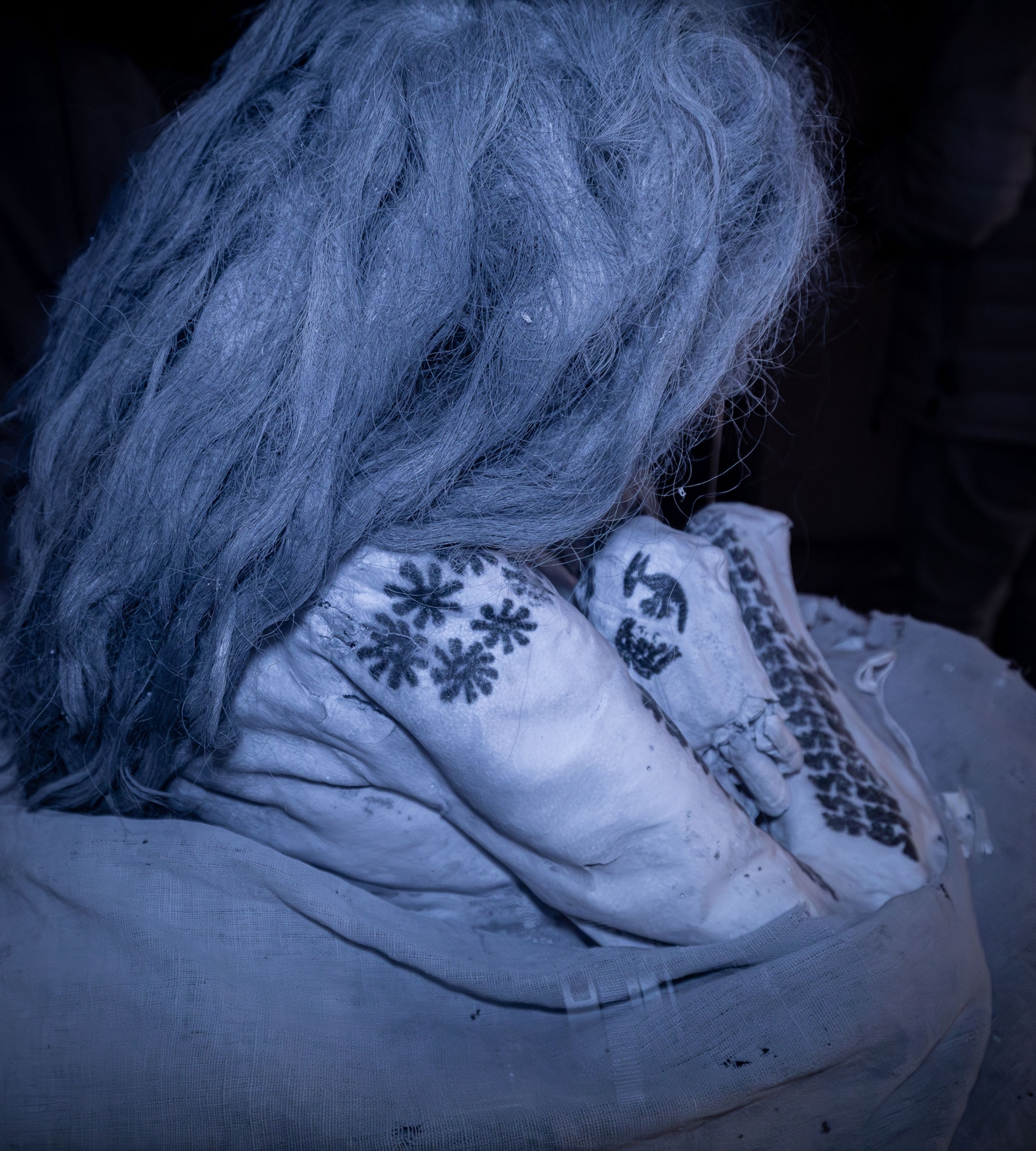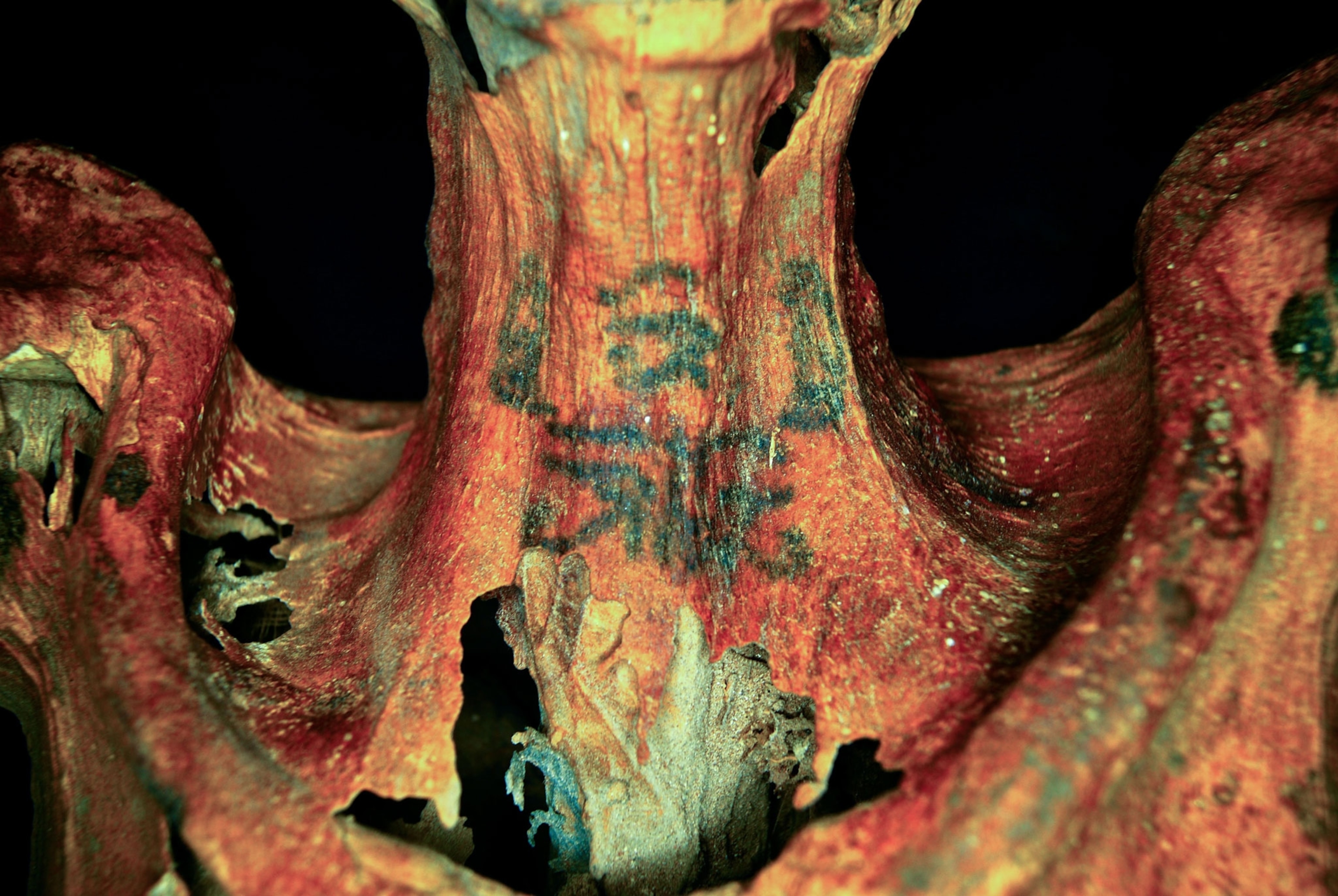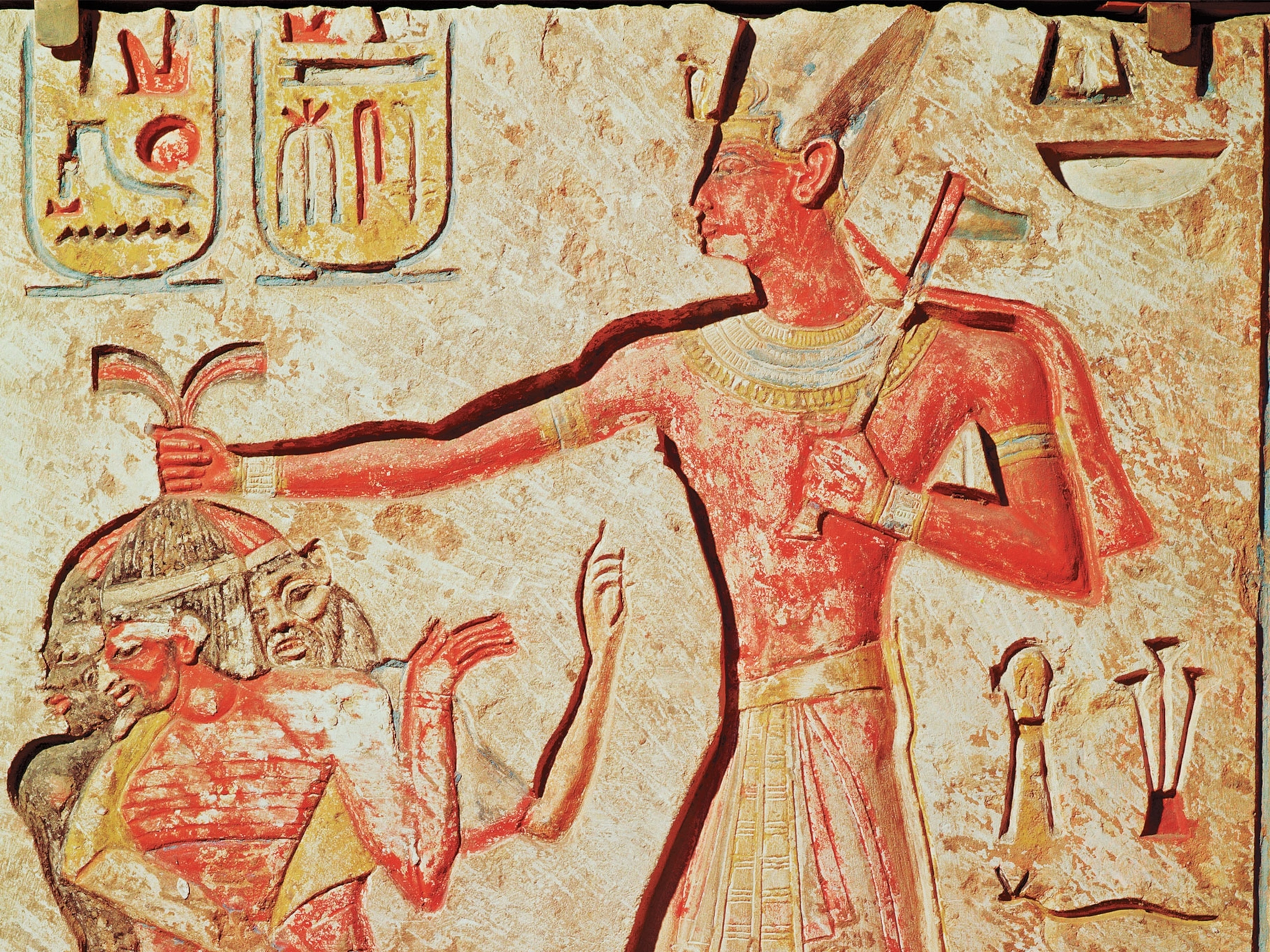The practice of permanently marking the skin is not a trend, but a practice deeply woven into the human story, stretching back more than 5,000 years. Archaeological finds, particularly the serendipitous discovery of preserved mummies in ice and arid tombs, have unveiled a silent script written directly onto the bodies of our ancestors. From the simple, therapeutic lines inscribed onto Ötzi the Iceman, believed to alleviate pain, to the intricate, mythological animal sleeves that once adorned Siberian royalty, these ancient tattoos reveal that the art form was rarely merely decorative. Across continents and millennia—from the pre-dynastic Nile Valley to the vast Russian steppe—tattooing was a powerful form of social communication, used to denote spiritual beliefs, indicate healing treatments, mark social status, and guide individuals through the essential rituals of life.
The Iceman’s Needle: The Origins of Therapeutic Tattooing
The most famous—and oldest known—example of tattooed human remains belongs to Ötzi the Iceman, a well-preserved Copper Age man discovered frozen in the Ötztal Alps between Italy and Austria in 1991. Dated to approximately 5,300 years ago, Ötzi’s body bears 61 tattoos, each providing an unprecedented window into the medicinal practices of prehistoric Europe.

His tattoos are notably simple: mostly clusters of parallel lines and small crosses, and, crucially, they are not placed randomly. The ink is concentrated on areas of his body that correspond to joints and the lower back, including his knees, ankles, and a dense set of parallel lines running up his spine. Modern analysis of Ötzi’s skeleton reveals that he suffered from numerous ailments, including chronic arthritis in his joints. This led researchers to hypothesize that the tattoos served a therapeutic or medicinal function, suggesting they were placed on traditional acupuncture points to relieve pain. This implies that the earliest known use of tattooing was not cosmetic, but a form of ancient, non-verbal medical treatment.

The method of application was remarkably simple: the pigment, likely soot or ash scraped from a fireplace, was rubbed into deliberate incisions made in the skin. The final result was not the crisp black linework seen today, but rather dark, carbon-based marks that formed an intimate, physical record of his lifelong struggle with pain. This discovery reshapes our understanding of prehistoric medical knowledge, confirming that sophisticated therapeutic practices, including a form of skin needling, were established long before the advent of written records.
The Earliest Evidence of Status and Gender in Egypt
While Ötzi provides the oldest evidence, the arid tombs of Egypt offer a complementary narrative, demonstrating that tattooing quickly expanded from medicinal use to ceremonial status. The remains of two pre-dynastic mummies, Gebelein Man A and Woman B, found near Luxor and dated to approximately 5,200 years ago, confirm that the practice was already sophisticated in the Nile Valley centuries before the pharaohs.

Gebelein Man A was discovered to bear tattoos on his upper arm—a series of curvilinear, S-shaped spiral patterns and a motif resembling a wild bull. These tattoos are interpreted not as medical marks, but as bold symbols of power, virility, and status, likely worn to assert tribal identity or prowess. Even more significant was the discovery on Gebelein Woman B, whose remains also bore ink: four small, S-shaped motifs covering her shoulder and thigh. This crucial find decisively proved that tattooing was a common practice embraced by both men and women in the complex social structures of pre-dynastic Egypt.
The presence of the tattoos on both sexes, positioned prominently on the arms and shoulders, suggests a public function tied to social identity and ritual participation. The pigment used was a dark, carbon-based material, similar to Ötzi’s, highlighting the enduring use of soot and ash as the primary ink across different continents. These ancient Egyptian bodies serve as a silent testament to the globalization of tattooing’s function, demonstrating that within a few hundred years of Ötzi’s life, the art form had already become a powerful tool for visual identity and non-verbal communication.
Siberia’s Ice Princess: Myth, Status, and Figural Art
Moving far beyond simple lines and spirals, the most artistically elaborate ancient tattoos belong to the Scythian or Pazyryk culture of Siberia. The most stunning example is the Siberian Ice Maiden (Princess Ukok), discovered in the Altai Mountains and dated to around 2,500 years ago. This discovery showcases the full maturation of ancient tattoo artistry, featuring intricate, dynamic, and highly symbolic figurative designs.

The Ice Maiden’s tattoos, miraculously preserved by the permafrost, cover her arms and shoulders in spectacular detail. Her designs depict fantastic, mythological creatures—including a deer with a griffin’s beak and a tiger with a ram’s horns—all rendered in the Pazyryk’s distinct “animal style.” These weren’t mere decorations; they were the visual representation of the cosmos and her place within it. Researchers believe these elaborate tattoos were supreme status symbols, signifying her high rank within the tribal hierarchy and likely carrying profound spiritual or protective meanings in her journey to the afterlife.
The painstaking detail and complexity of the tattoos suggest a long, deliberate process, carried out with specialized tools. This is a dramatic shift from Ötzi’s basic medicinal lines; the Siberian mummies bear entire, interconnected narratives on their skin, confirming that this was a high art form reserved for society’s elite. The Pazyryk tattoos demonstrate that in ancient Eurasian societies, the human body served as a vital canvas for displaying lineage, religious devotion, and tribal affiliation, essentially wearing one’s entire life story and cosmology on the skin.
The Global Script: Identity and Rite in the Americas
The archaeological evidence for ancient tattooing is not limited to Eurasia; across the Americas and the Pacific, the practice emerged independently as a crucial marker of social and biological transition. In North America, the Chumash people of coastal California left behind evidence in the form of specialized tattooing tools, including sharpened bone needles, dating back over 1,500 years. Ethnographic accounts confirm that the Chumash utilized geometric and linear patterns to signify identity and mark participation in vital ceremonies, a practice shared by both men and women.
Similarly, in South America, mummies recovered from the high Andes, attributed to cultures preceding and coexisting with the Inca, show evidence of blue-green linear or geometric tattoos. Across the Pacific, the Ainu people, the indigenous inhabitants of Japan, maintained a distinct and rigorous tattooing tradition into the modern era. Ainu women famously received tattoos around the mouth and on their forearms—a process that began in childhood and was completed upon marriage—to signify adulthood, marriage status, and tribal lineage.

These global examples underscore the universal function of tattooing as a durable, indelible method of coding essential personal information. Whether the ink was applied using bone needles on the Californian coast or by rubbing soot into cuts on the Egyptian tomb body, the fundamental purpose remained: to create a permanent, public record of one’s journey through life, from pain management and healing to the completion of key social and biological rites of passage.
From Soot to Spectacle: The Evolution of Tattoo Technology
The archaeological study of these ancient remains provides a rare and valuable timeline for the evolution of tattoo technology. The earliest methods, observed in Ötzi and the Gebelein mummies, were crude yet effective: simple carbon-based pigment (soot or ash) was rubbed into shallow incisions or puncture marks created by primitive bone or thorn tools. This carbon material proved exceptionally stable, contributing to the tattoos’ longevity over five millennia.

As the practice developed, so too did the tools. In the Pazyryk culture, the complexity of the figural designs required a far more refined technique, likely involving fine, multi-pronged needles and a meticulous, dedicated application process. In other cultures, specialized tools, such as the bone needles of the Chumash or the ceramic implements found in Polynesia, demonstrate the development of unique technologies tailored to regional styles and pigments. The blue-green tattoos found on some Andean mummies, for instance, hint at the use of mineral-based pigments, potentially derived from copper compounds, rather than just carbon soot.
Despite the regional variations in tools and artistic sophistication, one constant remains: the profound, enduring human desire to mark the body with meaning. The earliest tattoos were an appeal to medicine and healing; the subsequent ones were an assertion of status and identity. The discoveries confirm that tattooing is not a frivolous human vanity, but a deep-seated cultural impulse that has served as a silent, powerful script for spiritual, medicinal, and social purposes across nearly every continent for the entirety of recorded human history.




